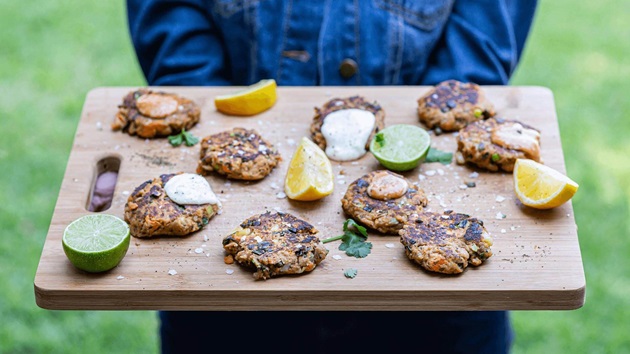The MSC Chain of Custody Standard makes sure that seafood with the MSC blue fish tick label comes from fisheries that are MSC certified sustainable.
Why is certified seafood important?
Shockingly, around a third of all seafood traded globally is not what it says it is. This is called seafood fraud. There are two reasons for this: intentional and unintentional. Whether it’s a genuine mistake or deliberately cutting costs for profit this is a major problem.
Why does seafood fraud matter?
Seafood fraud presents a few problems:
- Contributes to overfishing - fraudulent fish can be illegal or unreported. This means it's contributing to the overfishing problem because we don’t know that fish has been taken from the ocean. It could also mean endangered species are being caught and further threatened.
- Undercuts sustainable fishing practices - fraudulent fish can undermine the hard work of honest fishers by providing cheaper alternatives to sustainable seafood
- Pose health risks - fraudulent fish means you might inadvertently eat a species of fish you're allergic to.
Solutions to seafood fraud
The MSC program is helping to eliminate seafood fraud through a network of partners certified to the MSC Chain of Custody Standard.
Discover five surprisingly simple steps to eradicating seafood fraud
How is MSC certified seafood verified?
When you see seafood with the MSC blue fish tick label, it means that across the supply chain, from ocean to plate, MSC-certified fish has been separated from non-certified.
To ensure this works, every company at every step along the chain has been audited to the MSC Chain of Custody Standard.
More than 38,000 sites worldwide, including supermarket chains, fishmongers, hotels, and restaurant chains, are part of this global network of seafood supplies. We regularly check to see if the Chain of Custody system is working.
DNA testing has shown that mislabelling rates for MSC-labelled seafood are less than 1%.
What is DNA testing of fish?
When you look at a piece of meat or a piece of fish, it’s often difficult to tell what species it is. Turn it into a pie or a fish cake, and the difficult becomes the impossible. That’s where DNA testing helps. With a sample half a centimetre wide dropped into a little tube of preservative, you can find out if your fish is what the packet says or if it is something else.
DNA testing is just one of the checks to ensure the fish in the packet is the same as the fish on the label. That helps us to make sure MSC-certified companies are following the rules on honest claims and labelling.
No to fish fraud: How DNA testing ensures the authenticity of MSC labelled seafood
How does DNA testing of fish work?
There are two places in your cells where DNA live: the cell nucleus (the famous bit that codes how to make a person) and tiny little rings of DNA inside things called mitochondria. These are microscopically tiny little structures inside each cell that provide the power. Think of them as a few hundred little batteries powering the cell and you’re not far off.
Each of these mitochondria has its own DNA wrapped into tough little circles so it can replicate itself.
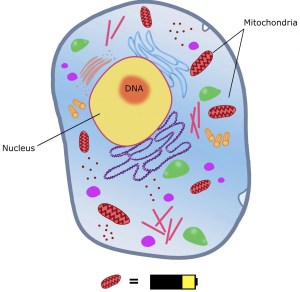
How does that help us to tell the difference between types of fish?
Those long strands of DNA in the nucleus are really long. The cod genome is made up of the same four letters that make up the genetic code, C, A, G, and T and it’s about 830 million letters long – the same as a stack of books nine metres high (about 30 feet). You also only get one copy per cell.
You need something shorter, with lots of copies per cell and that’s where those little circles of DNA in mitochondria come in handy. Because you get hundreds of copies in each cell, you don’t need many cells to test. That’s particularly helpful if you have a really small sample.
Googling through DNA
Step back from fish for a moment and imagine we have two USB memory sticks or those little cards that go in the back of a camera. One is full of Shakespeare, the other one is full of poetry by Wordsworth. But we don’t know which is which. We could read the whole thing, but that’s slow and expensive. DNA barcoding looks for a simple passage, a bit like running a google search. If we search for “I wandered lonely as a cloud…” and find it, then we’ve got the Wordsworth collection. If it finds “Romeo, Romeo, wherefore art thou Romeo?” we can be pretty confident that the memory stick contains Shakespeare.
The same thing happens when we test a piece of fish – albeit without the romantic poetry. The DNA barcode is located in a specific sequence of DNA about 500 letters long and made up of those same four letters, C, A, G and T.
By looking for these short barcodes, you can tell if your sample is a cod, a haddock, or a cow. All you need is a reference library of accurate samples, a small piece of your mystery fish and a friendly independent laboratory that can carry out the test.
The MSC process for DNA testing of fish
- Scientists take a tiny sample from each product
- DNA is extracted from the sample using a chemical process
- Using a process called polymerase chain reaction (PCR), the section of DNA that contains the 'barcode' for each species is isolated and the code identified
- The barcode obtained from the sample is then compared to a reference library of barcodes for all known fish species
- The reference code that matches the barcode is selected. The species is identified and cross-referenced with the product label.
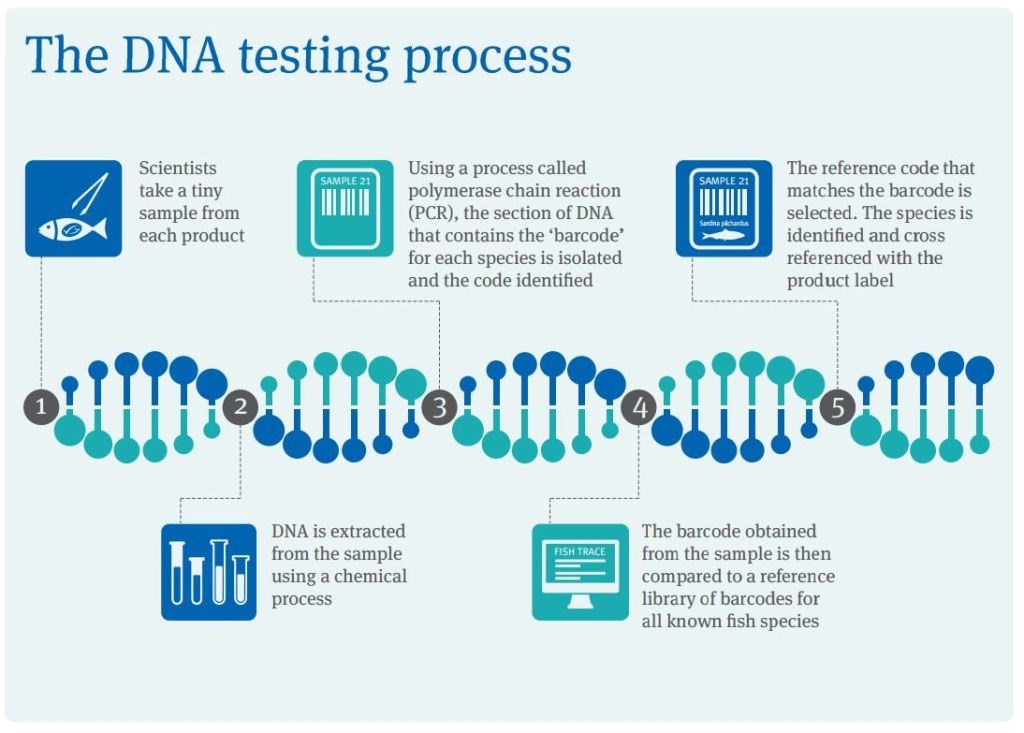
More on certified seafood
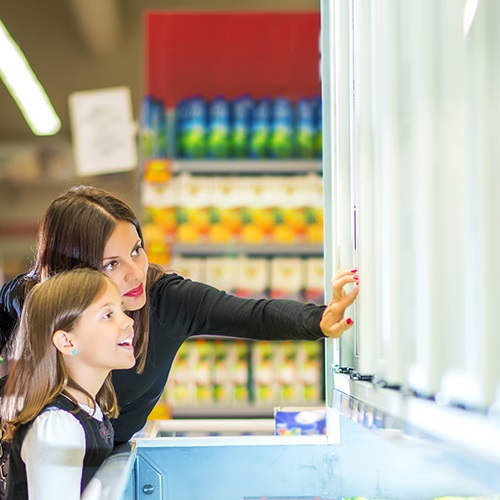
How does the MSC label compare?
There are many labels out there, so how does the blue fish compare to others?
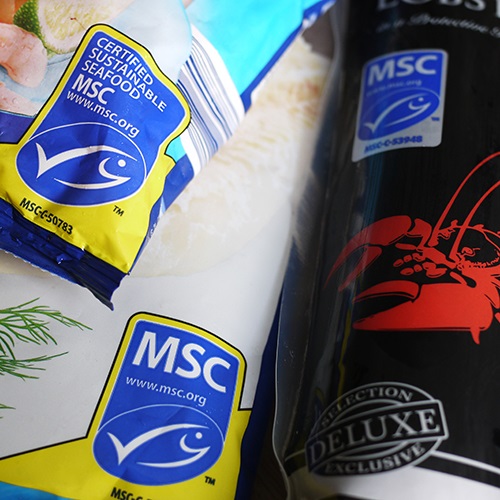
What does the MSC label mean?
Wild-caught sustainable: the MSC blue fish tick label is only applied to wild-caught fish or seafood from fisheries that have been certified to the MSC Fisheries Standard.
Sustainable Seafood Guide
Where to buy, what to look for and the questions to ask.


